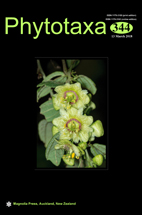Abstract
Aster Linnaeus (1753: 872) is a large genus of the tribe Astereae, containing ca. 180 species (Nesom 1994). This genus is mainly distributed in Eurasia, with only one species reaching North America (Nesom 1994, Chen et al. 2011). Aster is characterized by its purple or white ray florets and lanceolate style branches (Ling et al. 1985, Nesom 1994, Chen et al. 2011). Previous taxonomists separated many small genera from Aster based on the floret’s characters, such as Kalimeris (Cass.) Cassini (1829: 464), Heteropappus Lessing (1832: 189), and Miyamayomena Kitamura (1982: 409). But recently, many of these segregated genera were suggested to be placed back into Aster based on the phylogenetic evidence (Ito et al. 1995, Li et al. 2012, Jafari et al. 2015, Korolyuk et al. 2015).

